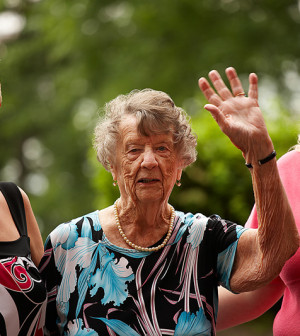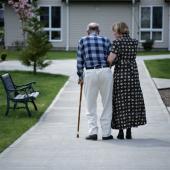- Navigating Your Midlife Crisis: Embracing New Possibilities
- City Raccoons Showing Signs of Domestication
- Mapping the Exposome: Science Broadens Focus to Environmental Disease Triggers
- One Week Less on Social Media Linked to Better Mental Health
- Your Brain Changes in Stages as You Age, Study Finds
- Some Suicide Victims Show No Typical Warning Signs, Study Finds
- ByHeart Formula Faces Lawsuits After Babies Sickened With Botulism
- Switch to Vegan Diet Could Cut Your Greenhouse Gas Emissions in Half
- Regular Bedtime Does Wonders for Blood Pressure
- Dining Alone Could Mean Worse Nutrition for Seniors
‘Informal Care’ for Older Americans Tops $500B Annually, Study Finds


Each year, people across the United States spend an estimated 30 billion hours caring for older relatives and friends, which costs $522 billion, according to new research.
A RAND Corp. study put a price tag on the time and wages that caregivers give up every year to help older people who need assistance in daily activities. The study authors said the significant financial toll of informal care has generated interest in workplace flexibility policies.
“Our findings provide a new and better estimate of the monetary value of the care that millions of relatives and friends provide to the nation’s elderly,” study author Amalavoyal Chari, a lecturer at the University of Sussex and a former researcher at RAND, said in a news release from the nonprofit research organization. “These numbers are huge and help put the enormity of this largely silent and unseen workforce into perspective.”
To get a better sense of the value of informal care, the researchers analyzed data from the 2011 and 2012 American Time Use Survey conducted by the U.S. Bureau of Labor Statistics. Participants of this survey were asked about their job status, as well as how much time they spent helping older relatives with their daily activities. The researchers also calculated participants’ hourly pay based on their hours worked and weekly wages as well as their education, age and gender.
They found that three out of five caregivers have jobs. People younger than 65 provide 22 billion out of 30 billion hours of caregiving. This accounts for the largest portion of informal care costs, or $412 billion per year, the researchers said. To provide care, however, working adults often cut back on their hours and lose income, researchers noted.
“Our findings explain the interest in workplace flexibility policies being considered by a number of states that provide paid time off from work for caregivers, as well as programs such as Medicaid’s Cash and Counseling program that allows family caregivers to be paid for their assistance,” study author Dr. Ateev Mehrotra, a researcher at RAND and an associate professor at the Harvard Medical School, said in the news release.
Replacing the informal care provided by friends and relatives with unskilled workers would reduce the cost of informal care to $221 billion per year, the study published online Oct. 28 in the journal Health Services Research found. On the other hand, if skilled nurses provided this care, the cost would jump to $642 billion annually.
More information
The U.S. Congressional Budget Office provides more information on rising demand for informal health care among older people.
Source: HealthDay
Copyright © 2025 HealthDay. All rights reserved.










